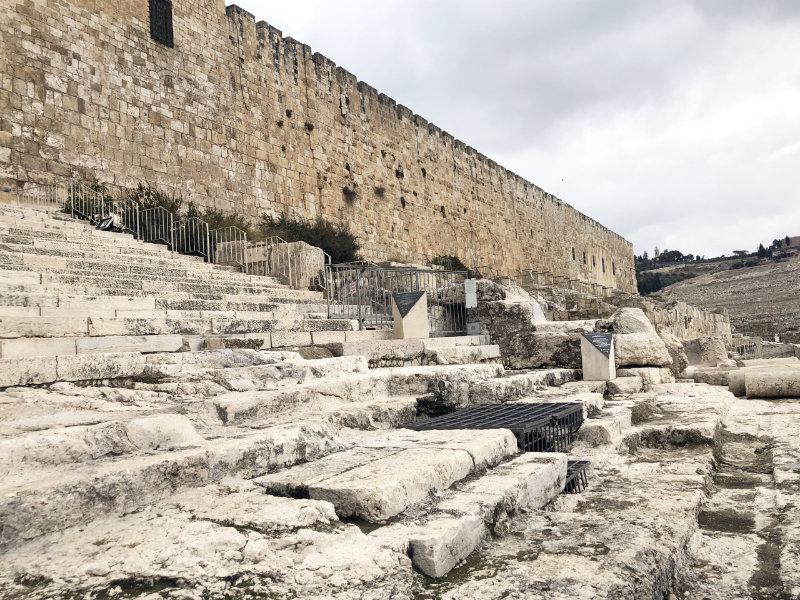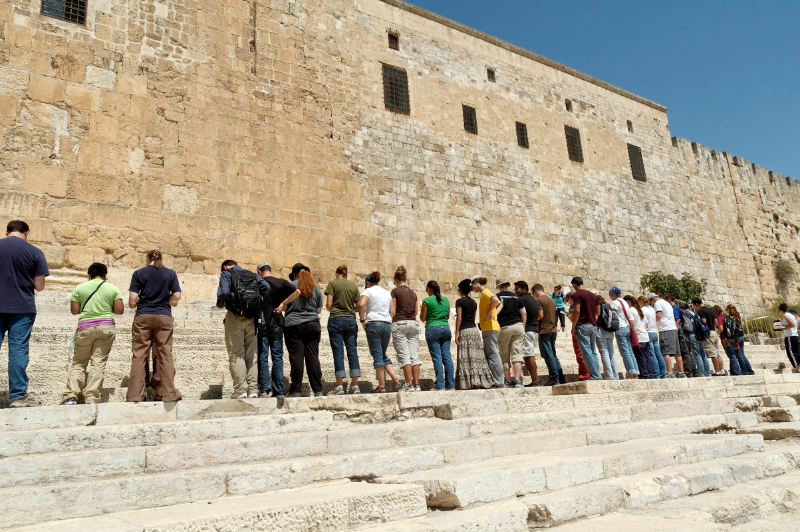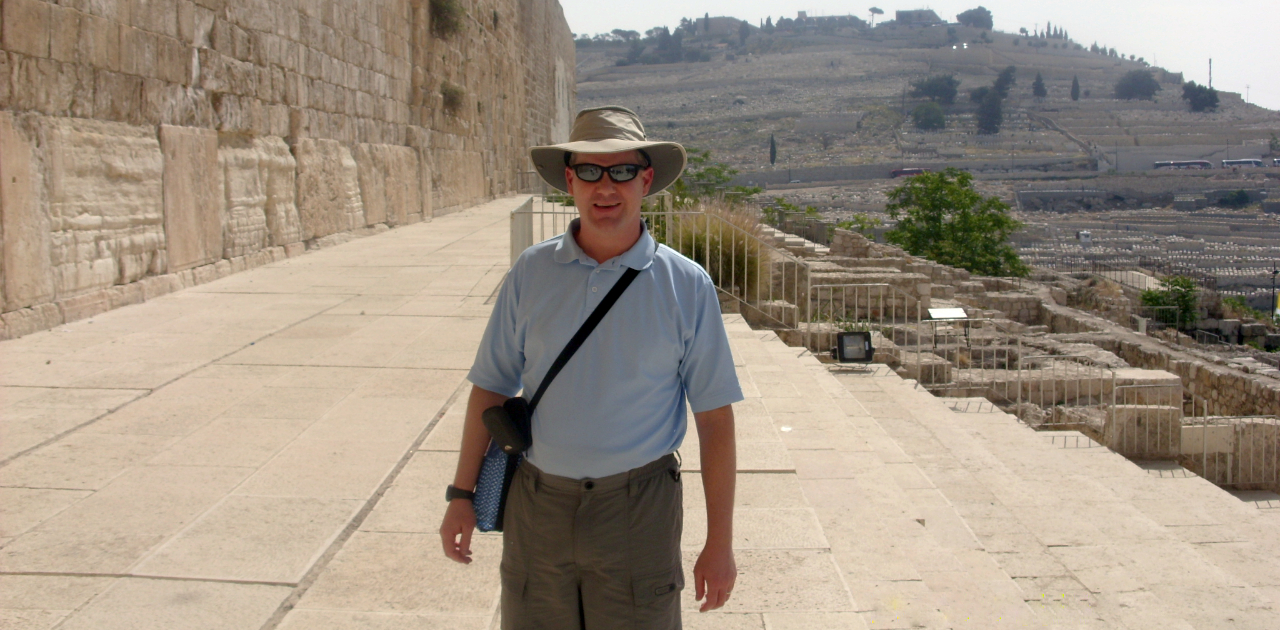
Along the southern edge of the Temple Mount in Jerusalem is a stairway measuring 200-feet wide. It includes sections of original bedrock steps and restored steps. In the time of Jesus, this was the approach to the Temple for the average, non-elite person, and so it was the path that Jewish pilgrims from all over the region climbed to worship God. These steps are located in the Jerusalem Archeological Park, which we often visit as part of a Faith Connections Travel pilgrimage.
We remember that under the Law of Moses God had commanded Israel, “Three times a year all your men must appear before the Lord your God at the place he will choose: at the Festival of Unleavened Bread, the Festival of Weeks and the Festival of Tabernacles. No one should appear empty-handed: Each of you must bring a gift in proportion to the way the Lord your God has blessed you.” (Deuteronomy 16:16-17, NIV) As pilgrims came from all around to fulfill this invitation to worship, they sang. What did they sing? They expressed their joy over being in the Holy City and their anticipation to bring their offering in worship at the Temple with the pilgrimage traveling songs known as the “Psalms of Ascent,” or what we know today as Psalms 120-134. In our Bibles, those psalms carry a superscription that connects them with that tradition.

The southern steps leading up to the tunnel that would take pilgrims onto the Temple Mount were not all of equal depth. Some were wider and some were more narrow. The effect that this unevenness created for the worshiper was to slow the climb. It promoted an awareness of the need to avoid a hurried and unreflective approach to such a holy endeavor as coming near to God’s presence. There were fifteen wide steps, and it has been traditionally understood that pilgrims sang these fifteen psalms successively as they reached each of those steps. Although there is no longer access to the Temple Mount from the southern steps, many pilgrims today still climb them reading an ascent psalm on each wide step as they go.
Take some time to visit these psalms of ascent with this in mind. Let the joy, eagerness, and humility of both ancient and modern pilgrims to Jerusalem resonate in a contagious way. And perhaps look forward to walking those steps yourself one day, just as Jesus and so many faithful believers of old did in the days when the Jerusalem Temple stood.
Pilgrims on the southern steps photo courtesy of Bible.com.


